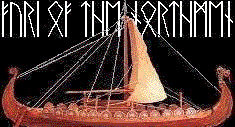Hi all! Discovery Channel featured something last night some of you might be interested in :
A Roman city is suspected to have existed in northwest China around 55 BC. It was discovered by a Chinese researcher while digging through Chinese cities names when he stumbled upon the name "Li Jian" (pronounced as "Lee Jien"). Li Jian was the ancient Chinese name for the Roman Empire. The present day Li Jian is a village with a very special feature - in it there's a monument which is of Roman design. The Chinese villagers built it recently and claimed that it is for their heritage and ancestors. Most villagers have striking similiar features of a white European althought they're all Chinese.
Written Chinese records showed an interesting encounter by the Chinese army during around that period. The Chinese empire was at war with a northwestern barbarian tribe known as the Hsiung Nu. The Chinese army under a colonel was dispatched to wipe out the tribe. The Chinese succeeded in eliminating the barbarian's stronghold and then the colonel noticed something very unusual - the barbarian tribe had their infantry formation similiar to the "testudo". The Chinese called it the "fish scale" formation. In the colonel's report to the Emperor, he mentioned this fact (thus it was officially recorded) and also mentioned that the barbarians fortified their stronghold with double palisides, a feature known to be Roman and not of Asian.
Historically the Hsiung Nu were a nomadic cavalry based tribe (very similiar to the Huns and Mongols). They have fought on horseback all their lives and would never have bothered to fortify their positions, much less invent foot infantry formations. Historians and researchers believed there had to be external influence on the tribe.
Excavations in the area revealed nothing in Roman in origin. Bone remains are inconclusive. There are metal helmet fragments with cravings "An Chao" suggests those are captured prisoners.
An Italian research have been doing research and visiting the village for over then years. He has an explanation that could provide the answer. When the Roman Empire invaded Parthia, it suffered the worst military defeat in the desert (sounds familiar? :), 20,000 Roman troops when and about 10,000 were taken prisoners. The prisoners became slaves, and were driven into Asia Minor to a city named Merv (which is present day northern Afghanisthan) .
The researcher retraced the supposedly steps of the Romans along the silk road. It was in Merv archeologists found Roman coins, suggesting Romans indeed had been there. It is believed the Romans were further driven into northern China by their captors. It was in Li Jian that the Romans hired out themselves as mercenaries. They were hired by the tribes to fight against the Chinese. They were captured by the Chinese (hence the craving "An Chao") and offered positions to defend the northern Chinese border. Eventually they settled down and intergrated into the Chinese empire.
Explaining why there were no Roman artifacts at dig sites. The site has been opened to public only recently and furthermore, the Romans being prisoners were definitely not allowed to retain their original weapons. Instead they would be supplied by local arms.
----------------------------------------------------------------
Unfortunately I did not have time to finish watching the entire documentary
:( Oh well hopefully there's a replay tonight...and interesting event!



 Reply With Quote
Reply With Quote




 )
)


 What I posted was just a short summary. I did not finish watching it, and I find it almost impossible that this would happen. But anything is possible in this world. I would want to watch it again, because it's entertaining
What I posted was just a short summary. I did not finish watching it, and I find it almost impossible that this would happen. But anything is possible in this world. I would want to watch it again, because it's entertaining 








Bookmarks